It's not as deadly, but it is damaging. Hail, the unwanted visitor destroying property during severe weather.
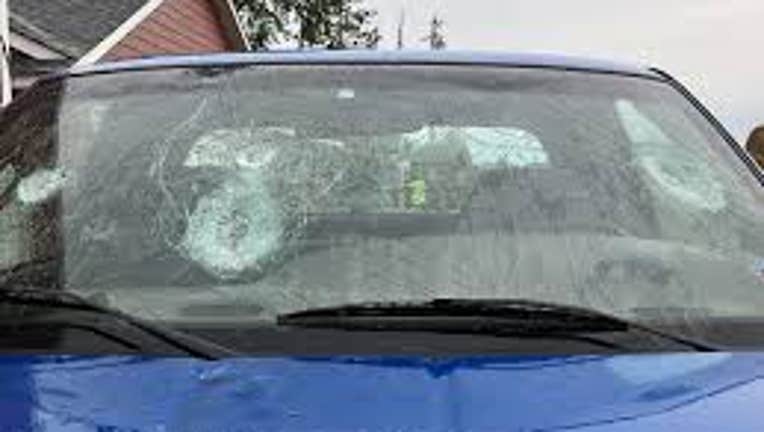
(courtesy: NSSL)
DETROIT (FOX 2) - It’s the severe weather hazard no one wants to see develop. Typically forming between May and September, hail costs the United States as much as $22 billion dollars a year in repairs to cars, homes, crops and even people.
With far fewer fatalities than tornadoes, lightning or flooding, NOAA statistics reveal four people have been killed by hail since 2000.
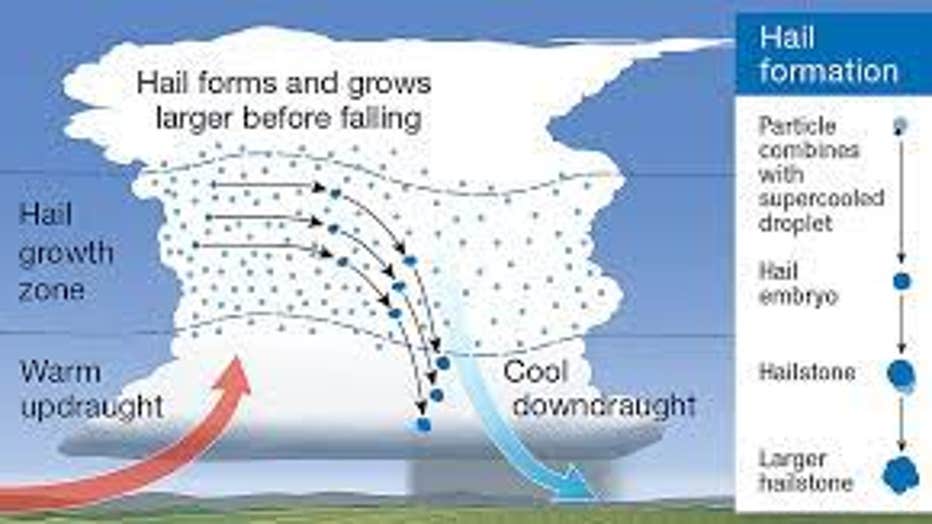
(courtesy: NOAA)
Hail is formed in the updrafts of a thunderstorm cloud. A frozen droplet begins to fall from a cloud during a storm, but gets caught up in the strong updraft. As that droplet rises, it hits other droplets and they freeze together. This continues and layer upon layer forms until the hailstone is too heavy to remain in the cloud, or the updraft slows down.
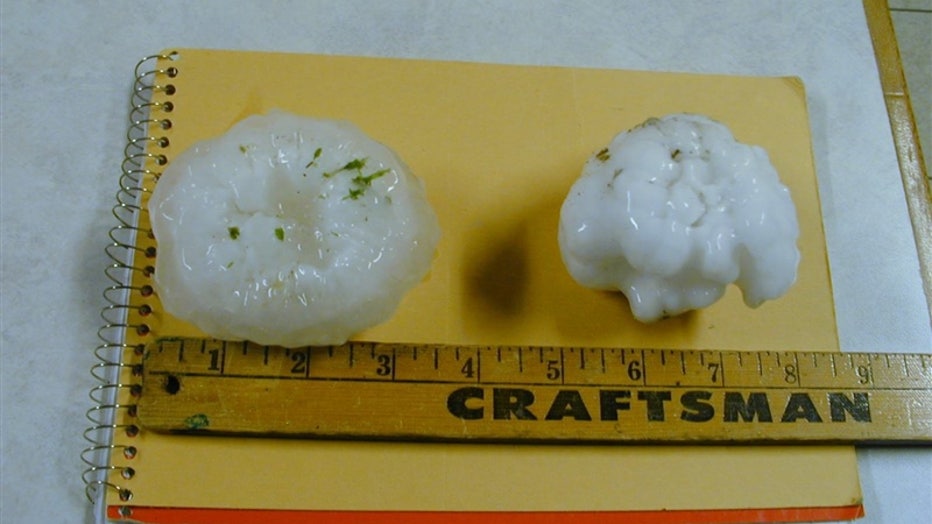
(courtesy: NOAA)
Hail sizes vary. They can be lumpy or smooth. Translucent or opaque based on the temperature and liquid content of the cloud. Their rate of descent is dependent on their size. Measurements using a ruler or tape measure are best, but for simplicity, everyday items provide a basis for comparison.
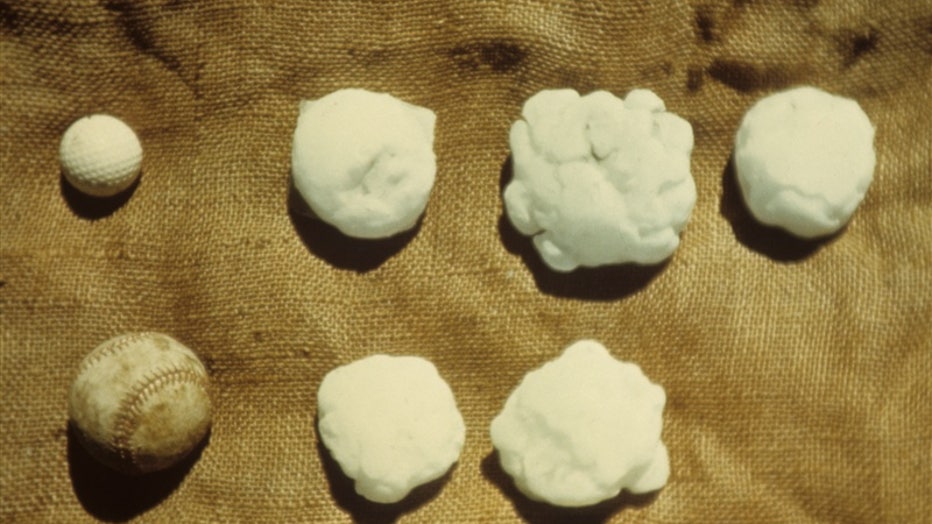
(courtesy: NOAA)
Pea = 1/4 inch diameter
Mothball = 1/2 inch diameter
Penny = 3/4 inch diameter
Nickel = 7/8 inch
Quarter = 1 inch — 1 1/4 inch or larger is considered severe
Ping-Pong Ball = 1 1/2 inch
Golf Ball = 1 3/4 inches
Tennis Ball = 2 1/2 inches
Baseball = 2 3/4 inches
Tea cup = 3 inches
Softball = 4 inches
Grapefruit = 4 1/2 inches (measurements courtesy NSSL)
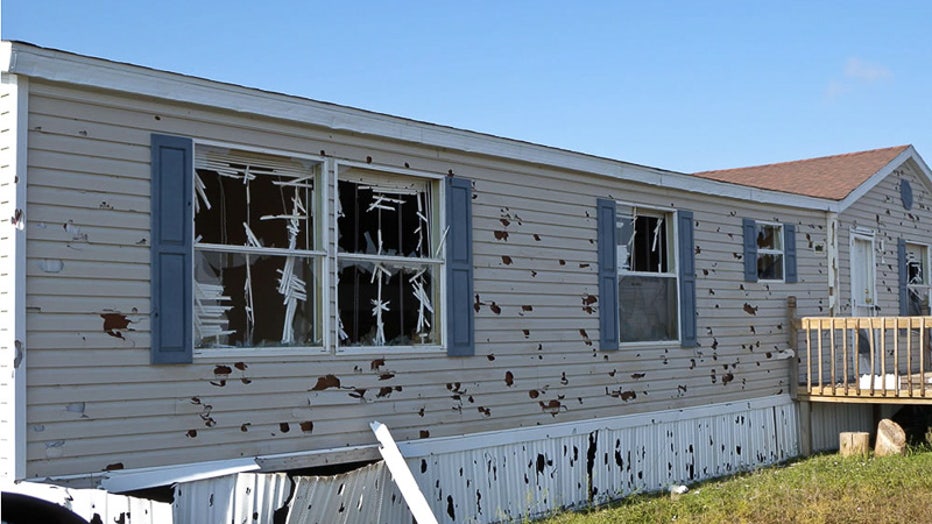
(courtesy: NOAA)
Depending on the wind speed and direction, hail can fall at an angle or even sideways breaking windows, damaging cars and siding, destroying crops.
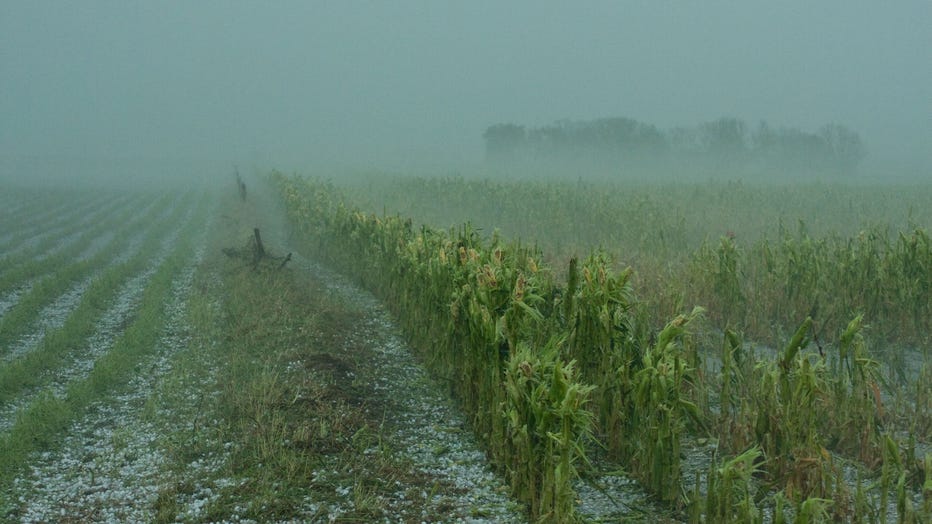
(courtesy: NOAA)
The National Severe Storms Lab says the expected fall speed for small hailstones measuring less than an inch is between 9 mph and 25 mph. 1" to 1.75" stones could fall at a rate of 25 mph to 40 mph. Large hail falling from a supercell thunderstorm could have a fall speed between 44 mph and 72 mph. Golf ball and larger size hail does the most damage to cars, homes and crops. The largest hailstone recovered in the United States fell in Vivian, South Dakota on June 23, 2010. It weighed 1 pound, 15 ounces and measured 8" x 18!"
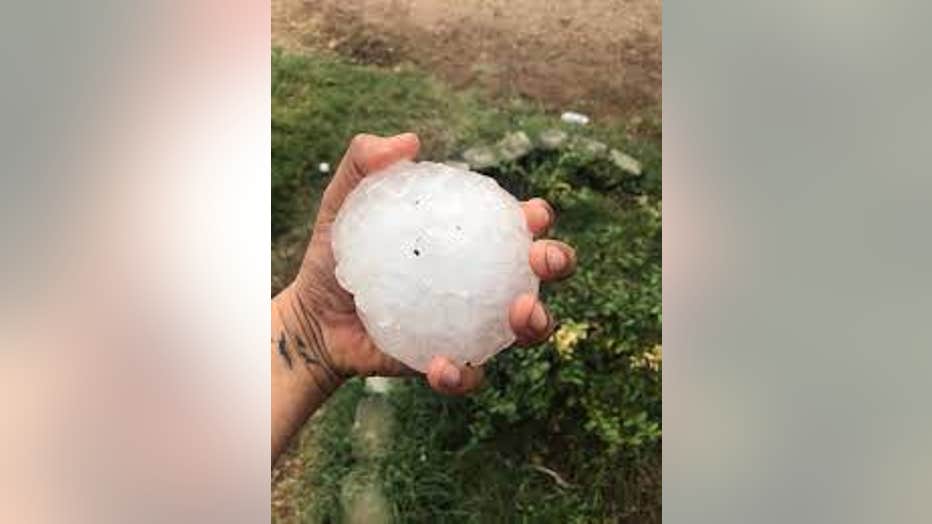
(courtesy: NSSL)
If caught outdoors during a hail storm, protect your head and seek shelter immediately. A 19 year old man in Texas died in 2000 after being struck in the head with a baseball size hailstone.
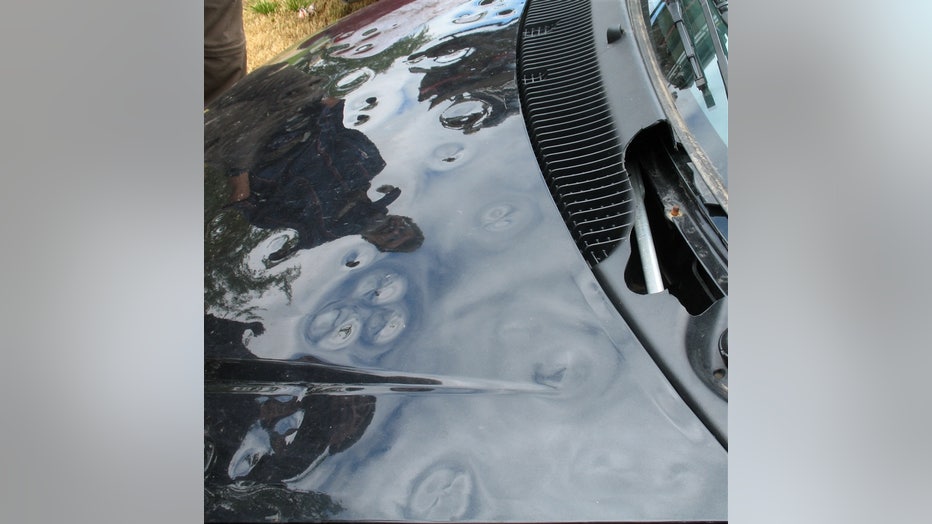
(courtesy: NSSL)
If you are driving, try to pull off the road. Stay inside your car for your own protection. If possible, move your car into a garage or shelter to minimize damage to your vehicle.
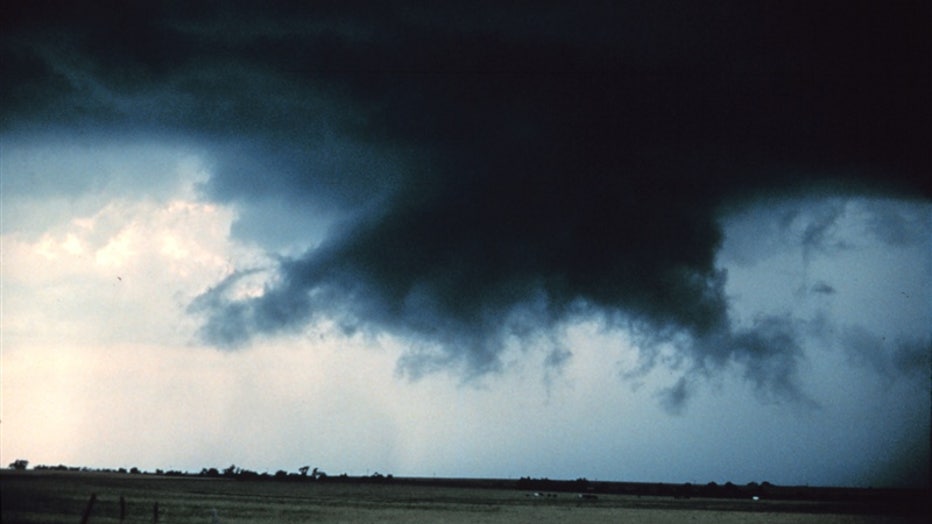
(Hail falling from a cloud, courtesy: NSSL)
Prior to severe weather occurring, check your insurance policies for home and car to see if you are covered for hail damage.
All this week, we’ve examined the deadly effects of severe weather. Tomorrow on Weather or Not, a few more tips to keep you safe.

